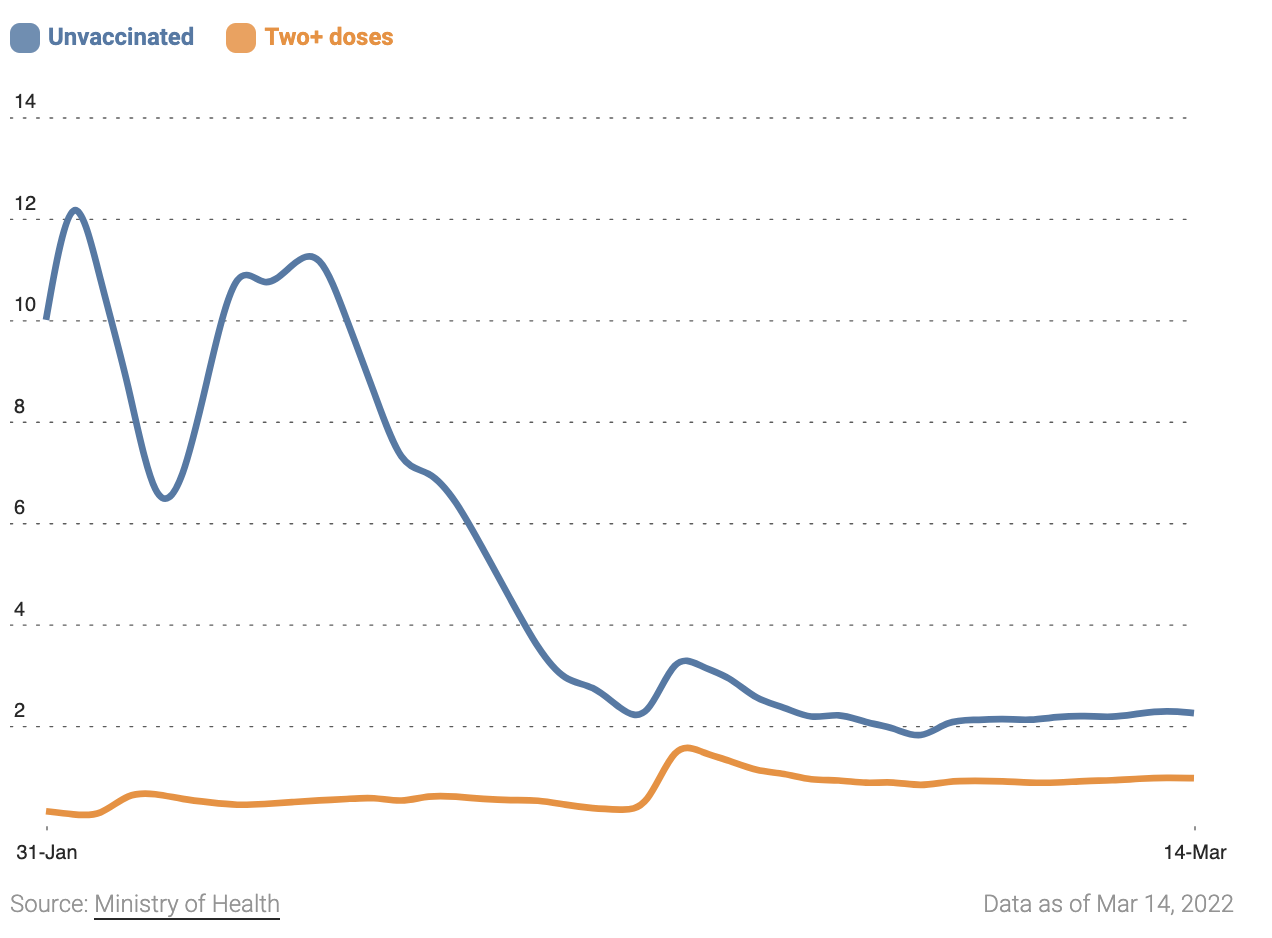Free RATs make economic sense
We urgently need higher volumes of free Rapid Antigen Tests (RATs).
Covid-19 case numbers are raging in New Zealand and already compare to the worst days seen at the height of the UK wave.
Yet where is our defence? RATs are not in cupboards ready to pounce.
Despite the government providing free tests for those with symptoms (plus close contacts), they’re only available via an online order and driving to a pickup point. The alternative is going to a testing centre with queues.
It will be hugely tempting for people to place online orders, symptoms or not. Getting access to a RAT for that just-incase moment is a building source of frustration. To hazard a guess, the new system could be inundated or overwhelmed this weekend. If postal orders are introduced, only the brave will speculate on the wait time.
The problem with not ordering until you need a RAT, is we all take risks. That little sniffle, the slightly sore throat and busy families carry on.
Without the introduction of a broader layer of free tests, surveillance will be inadequate and we’ll pay the price with the “Big Sick” – partially closed businesses and schools for longer than necessary and with greater economic costs.
That’s backed up by Flinders University in South Australia, where researchers concluded “a policy of government-funded Rapid Antigen Tests for all is highly likely to be cost-effective”..
The privileged RAT
As Omicron rages across the country, we now have the middle classes chucking a $30 box of RATs in with the weekly shopping. It sits there smugly, beside a bottle of prosecco and the parmesan.
The humble RAT, if left to multiply in this manner throughout the country, will become no more than a futile status symbol.
You couldn’t possibly hold a children’s birthday party without the invites adding a reminder for each child to test on the morning of the party. There will be hushed exasperation about those who don’t RAT before every visit to Granny and Grandad. Then there’s the benefit of private schools, said with a cheeky wink. Ours has twice weekly tests and they’re popping the cost on the invoice.
Unfortunately, market forces and financial advantage don’t work with a raging virus. The privileged RAT is money wasted. Risk reduction only works with widespread equality of access.
The poverty RAT
At the very least we should be following the Australian model of ten free home-test kits, over a three-month period for pensioners and those with community services cards. Getting to testing stations and pickup points, for the elderly and those mindful of transport costs, is a barrier.
Phamacies should be able to issue tests (without symptoms) to these households.
Covid-19: Hospitalisation rates among unvaccinated cases is many times higher than that of cases with two or more vaccine doses.
Hospitalisation rates by vaccination status
The working-class RAT
With our cost-of-living crisis, how many families are going to buy more than one box of RATs? They’re a novelty at first, but the ongoing cost is too much for most.
A household could easily spend $60 to $100 a month being responsible and testing before visits and gatherings.
A far stronger government policy would see the controlled release of free tests across the whole population, over six months to get through winter.
In addition, a nationwide school and university testing programme could be rolled out to protect the education system and stop one of the fastest chains of infection seen overseas.
The economic RAT
Flinders University in Adelaide analysed the economic cost of providing free RAT tests across the Australian population in January 2022.
In their analysis they used a model where 20 per cent of people purchased their own rapid antigen test and a second group of 10,000 people were given free RATs. It was estimated this would cause an additional 464 people to isolate and stop spreading the virus. The cost of these tests would be $100,000. The cost-saving on PCR tests was removed, giving an estimated cost to the taxpayer of $52,000. This equates to $112 for early isolation of each of the 464 infected people.
It was deemed highly likely the costs of a wider spread of Covid-19 – closed businesses, ongoing health issues and pressure on the health system – would be more than $112.
The higher the infection rate in the model, the more economic sense free RAT testing makes. In this model the infection rate was 4.64 per cent. In New Zealand, much higher rates of 5-10 per cent have already been seen in the symptomatic and close-contact population. That certainly seems to indicate plenty of scope for finding undetected cases.
The reverse is also true. With low infection rates, the arguments for free RAT testing don’t stack up financially and an end-date is a reasonable policy.
The big question is whether the government bungling of RAT orders has exposed New Zealanders to a higher undetected transmission rate, with health and economic consequences that could have been avoided. Time is of the essence.
Janine Starks is the author of www.moneytips.nz and can be contacted at moneytips.nz@gmail.com. Opinions are a personal view and general in nature. They are not a recommendation for any individual to buy or sell a financial product. Readers should always seek specific independent financial advice appropriate to their own circumstances.

